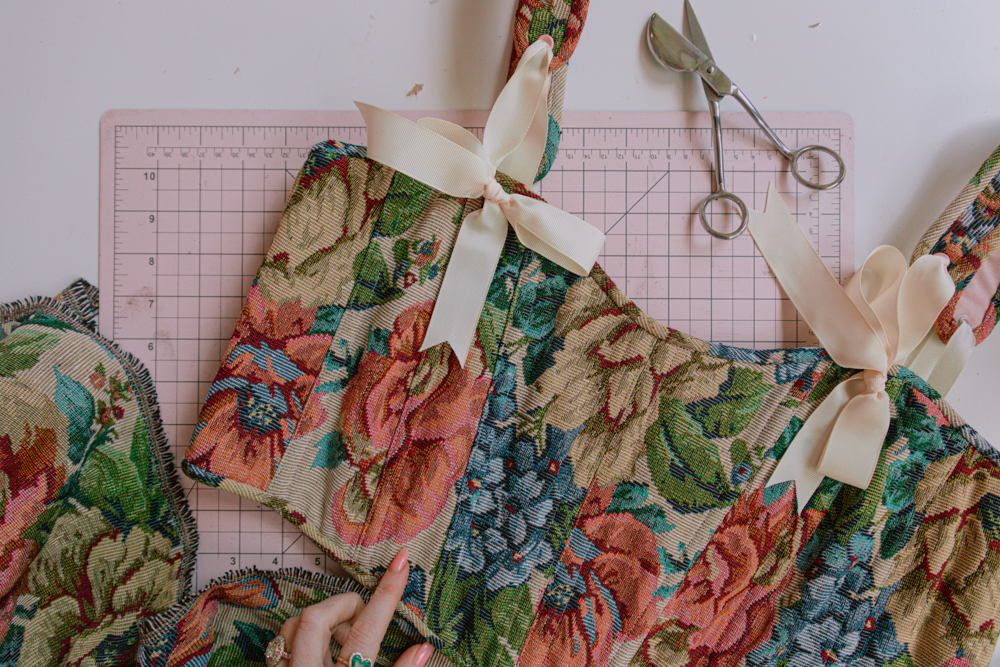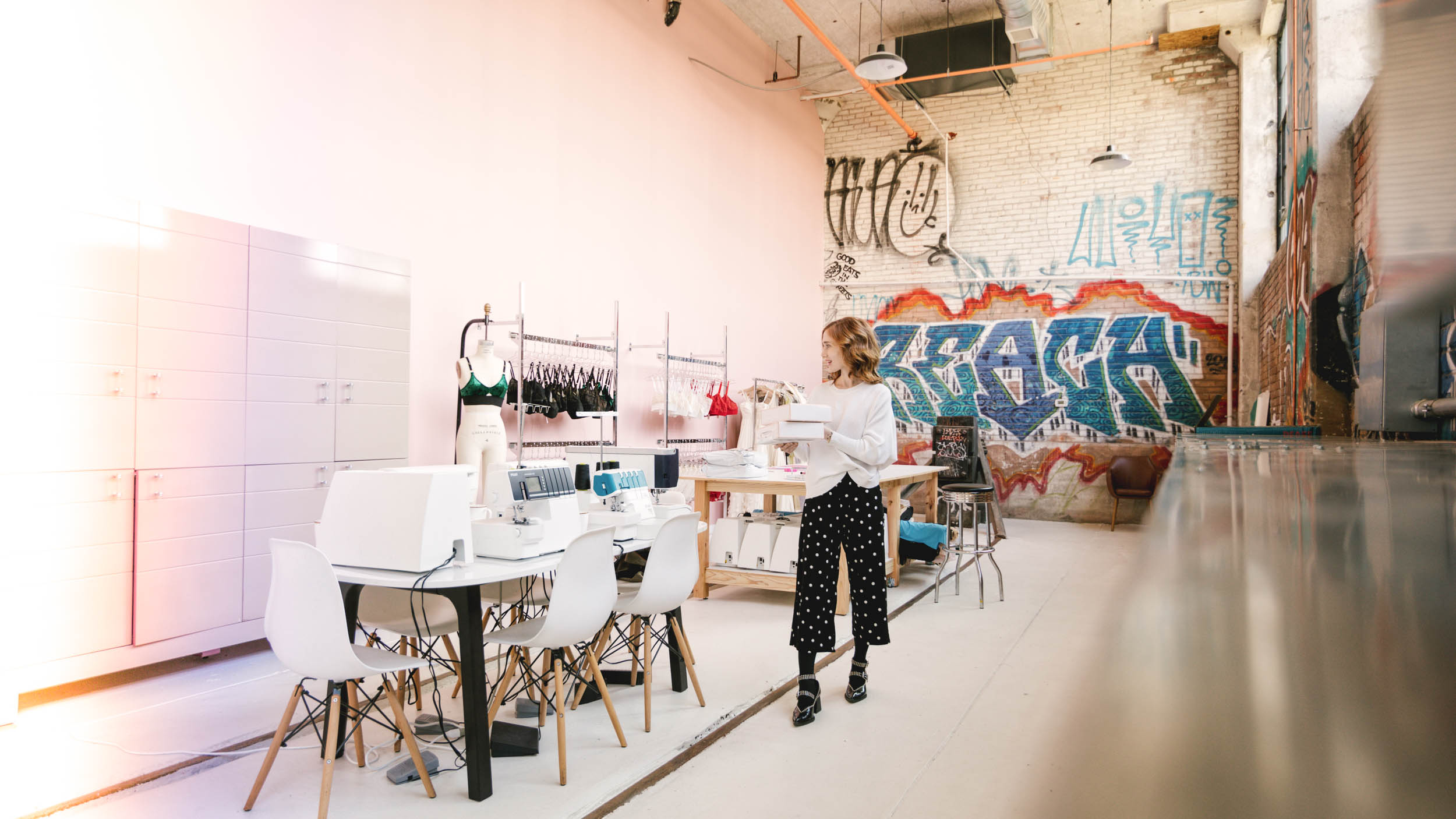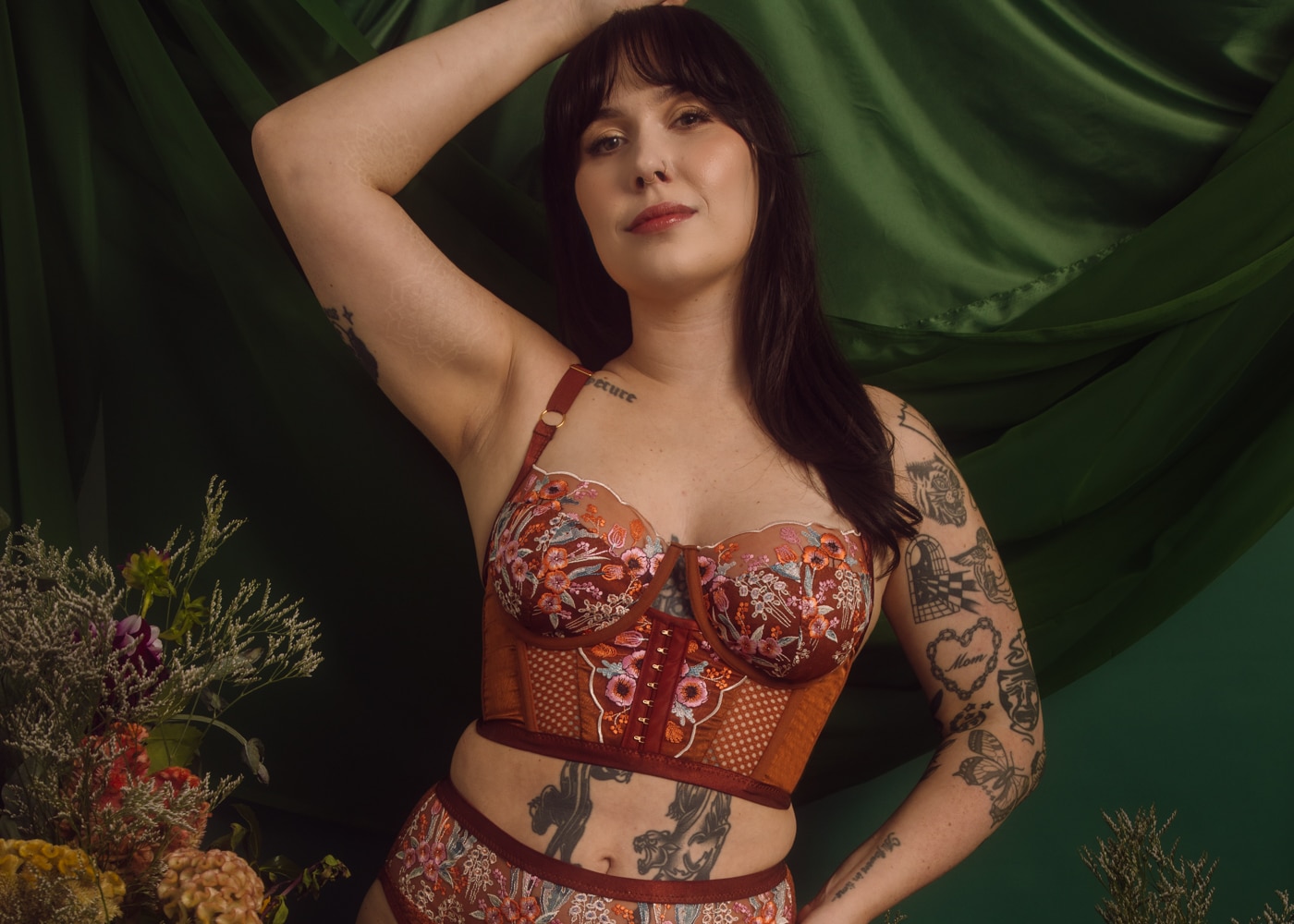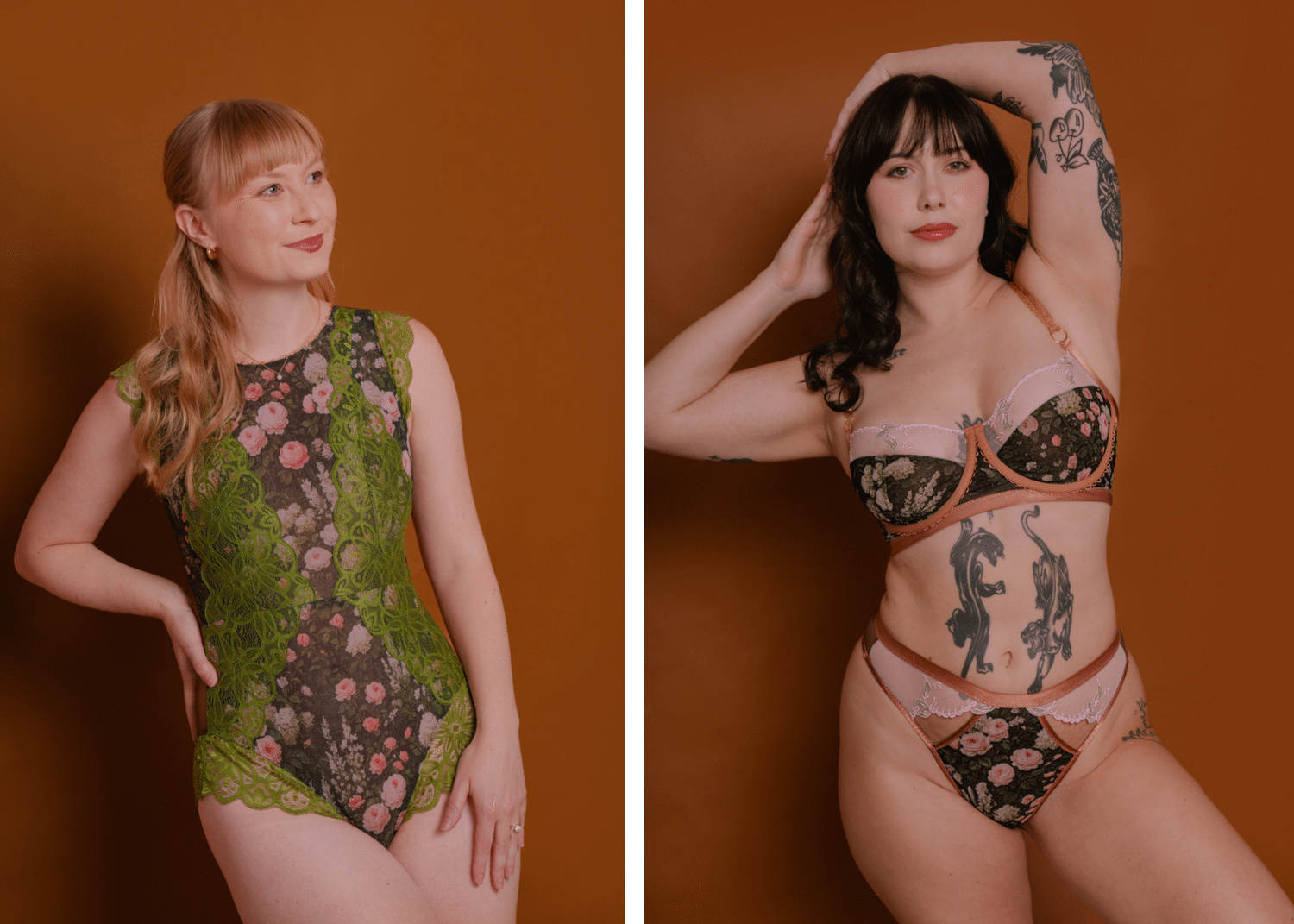Tips for Sewing Brocade Fabrics: A Guide for Sewists


Sewing brocade fabrics is rewarding yet challenging. Brocades are known for their rich textures, intricate patterns, and luxurious feel. Also, their high price tags ;) Ask me how much I paid for a yard of brocade from Mood? Okay, please don’t because it was wayyyyy over my normal budget. It was my birthday treat! Brocades are often chosen for high-end garments, home décor, and special occasion outfits. However, their heavy weight and tendency to fray can pose difficulties for even seasoned sewists. Whether you’re crafting a statement piece or fashion corset like the Madalynne X Simplicity S9974 here are my essential tips for sewing brocade fabrics.
1. Choose the Right Needle and Thread
When sewing brocade, it’s crucial to use a needle that can handle the fabric’s thickness. A size 80/12 or 90/14 sharp or universal needle is often a good choice. For lighter brocades, a finer needle might be more appropriate, while heavier brocades may require a stronger needle.
As for thread, opt for a strong, all-purpose polyester thread that can withstand the fabric’s weight without breaking. Matching the thread color to the fabric is ideal, but if you’re unsure, choose a slightly darker shade to blend with the brocade’s background.
2. Handle the Fabric with Care
Brocade is prone to fraying, so it’s essential to handle it gently throughout the sewing process. Avoid over-manipulating the fabric, and always cut it with sharp scissors or a rotary cutter to minimize fraying. If your brocade has a pronounced pattern or directional print, take extra care to align the design when cutting your pieces.
3. Stabilize the Fabric + Prevent Fraying
To prevent the fabric from slipping, stretching, and especially fraying, stabilize it with interfacing. Fusible interfacing works well for many brocades, but if your fabric is particularly delicate, you might prefer to use sew-in interfacing to avoid any risk of damaging the material with heat. Click here to learn my game changing tip when interfacing fashion corsets.
For seams, consider using a stabilizing stitch or applying a strip of lightweight fusible interfacing along the seam lines before stitching. This will help prevent the fabric from shifting or puckering during sewing.
4. Pin Sparingly and Carefully
While it’s important to secure your fabric before sewing, be mindful that brocade can show pin marks easily and pins can cause snags, especially if it has a satin finish. Use fine, sharp pins and place them within the seam allowances to avoid visible holes. Alternatively, you can use fabric clips.
5. Use a Walking Foot
Brocade’s thickness and tendency to shift can make it challenging to sew evenly. A walking foot attachment for your sewing machine can help feed the fabric through more smoothly, reducing the likelihood of puckered seams or mismatched patterns. If you don’t have a walking foot, you can also try lengthening your stitch or using a roller foot to achieve better results.
6. Finish the Seams
In addition to stabilizing, finish the seams properly can further help with fraying. Overlocking (serging) the edges is one of the best options, as it provides a clean, secure finish. If you don’t have a serger, consider using a zigzag stitch or binding the edges with bias tape.
7. Press with Caution
Brocade fabrics can be sensitive to heat, especially those with metallic threads or delicate fibers. Always test a small, inconspicuous area before pressing the entire garment. Use a pressing cloth and a low to medium heat setting to protect the fabric. Steam can be beneficial for setting seams, but take care not to overdo it, as too much moisture can cause the fabric to lose its shape.
8. Mind the Drape
Brocade fabrics can range from stiff and structured to relatively fluid, so it’s important to choose a pattern that complements the fabric’s natural drape. Structured garments like jackets, skirts, and dresses with fitted bodices are well-suited to brocade. If your pattern calls for a softer drape, consider underlining or using a different fabric for areas that require more flexibility.
9. Plan for Pattern Matching
Brocade often features large, intricate patterns that require careful alignment. When cutting your fabric, take the time to match patterns at seams and other critical points. This may require extra fabric and careful planning, but the result is a more polished and professional-looking garment.
10. Take Your Time
Sewing with brocade is not a race—it’s a craft that requires patience and precision. Take your time with each step, from cutting and pinning to sewing and pressing. Rushing through the process can lead to mistakes that are difficult to correct, so approach your project with care and attention to detail.







No Comments
Sorry, the comment form is closed at this time.